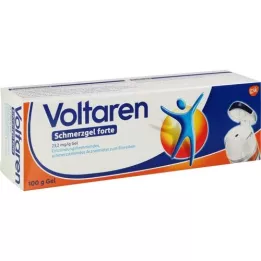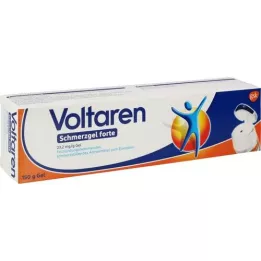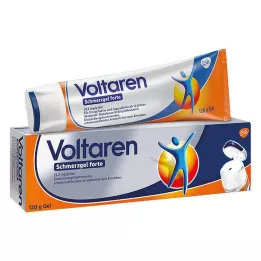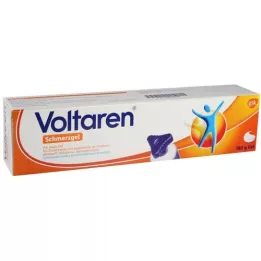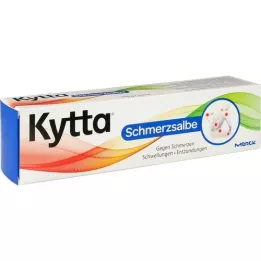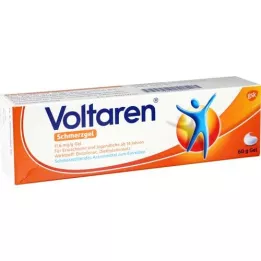PROCAIN-Loges 1% injection solution ampoules, 50x2 ml
PROCAIN-Loges 1% Injektionslösung Ampullen
Manufacturers: Dr. Loges + Co. GmbH
PZN: 02860528
Dosage: Ampullen
Content: 50X2 ml
Reward Points: 252
Availability: In stock
$37.33
$31.69
from German pharmacies to your address
Instructions for use for PROCAIN-Loges 1% injection solution ampoules, 50x2 ml
procaine-Loges® 1 % injection solution
Active ingredient: Procainhydrochloride
Area of application: Procaine-Loges® 1% injection solution is indicated for intracutaneous use on the healthy skin within the framework of neural therapy principles.
Warning: contains sodium chloride. Note leaflet.
Read the package supplement and ask your doctor or pharmacist for risks and side effects.
Status: 02/2018
Detailed instructions for PROCAIN-Loges 1% injection solution ampoules, 50x2 ml
Field of use
- The preparation is a medicine for local anesthesia (local anesthetic from the Ester type).
- It is injected into the healthy skin (intracutaneously) within the framework of neural therapy applications.
Active ingredients / ingredients / ingredients
20 mg procain hydrochloride
17.33 mg procain
Sodium chloride auxiliary material (+)
Salic acid, concentrated auxiliary material (+)
Nitrogen, sterile filtered auxiliary substance (+)
Water, for injection purposes auxiliary material (+)
Contradictions
- The medicine must not be used,
- in case of hypersensitivity to Procain,
- in case of hypersensitivity to other local anesthetics from the Ester type,
- in case of hypersensitivity to sulfonamides (certain group of antibiotics, certain group of antidiabetics),
- in case of hypersensitivity to benzoic acid and/or parabens (preservatives),
- in case of hypersensitivity to one of the other components of this medicine,
- with a known lack of pseudocholinesterase (certain body's own substance) with the result of a significantly slowed breakdown of procain,
- for injection in arteries (intra -arterial), in the surrounding area of the outer cockroach of the central nervous system (epidural) or in the vertebral canal (spinal)
dosage
- The preparation is generally used by a doctor. Please ask your doctor if you are not quite clear about the application.
- It should only be injected by people with appropriate knowledge to successfully implement the respective applications.
- Basically, only low -concentrated solutions from Procainhydrochloride are used when used continuously. A repeated application of this drug can lead to reversible loss of effectiveness due to tachyphylaxis (rapid tolerance development compared to the medicine).
- Basically, only the smallest dose can be administered with which the desired sufficient nerve blocking is achieved. The dosage must be carried out individually according to the special features of the individual case.
- If the doctor does not use it differently, the following dosage recommendation applies to young people over 15 years and adults with an average body size:
- Skin squad
- Procainhydrochloride dose: per square of up to 10 mg
- Volume of the drug: per whistle up to 1 ml
- Skin squad
- The recommended maximum dose with one -time application in tissues, from which active ingredients are absorbed, is 500 mg of Procainhydrochloride (corresponding to 50 ml). When using the head, neck and genital area, the recommended one-page maximum dose is 200 mg of Procainhydrochloride within 2 hours (corresponding to 20 ml).
- Patients with certain previous illnesses:
- In patients with certain previous illnesses (vascular closures, arteriosclerosis or nerve damage in diabetes), the dose must be reduced by a third.
- If the liver or kidney function is restricted, increased plasma levels can occur, especially when used. In these cases, a lower dose range is also recommended.
- Older people:
- In older people, dose adjustment is recommended according to the respective general condition.
- Please speak to your doctor if you have the impression that the effect of the Medicines is too strong or too weak.
- If you have used a larger amount than you should:
- In low -damaging doses, the drug acts as stimulants on the central nervous system, in high -damaging dose areas, i.e. H. The central functions are depressed. Procainhydrochloride poisoning runs in 2 phases:
- They become restless, complain of dizziness, acoustic and visual disorders as well as tingling, especially on the tongue and in the lip area. The language is washed out, shaking frost and muscle twitches are harbing of a threatening seizure of the whole body. When the central nervous system is progressing, there is an increasing dysfunction of the brain stem with the symptoms of breathing restriction and coma up to death.
- Emergency measures and antidote will be initiated immediately by the treated doctor in accordance with the disease.
- In low -damaging doses, the drug acts as stimulants on the central nervous system, in high -damaging dose areas, i.e. H. The central functions are depressed. Procainhydrochloride poisoning runs in 2 phases:
- If you have any further questions, ask your doctor or pharmacist.
Taking
- Depending on the required nerve blockade, the preparation is injected into the skin (intracutaneously).
- It should only be injected by people with appropriate knowledge to successfully implement the respective applications.
Patient information
- Special care in the application is required,
- if you are at one
- certain form of muscle weakness (mysthenia gravis)
- Disorder of the cardiac leaders
- Cardiac muscle weakness or
- the injection to an inflamed area is to be carried out.
- Before the application, the applicant will basically pay attention to a good filling of the circulation, carry out careful circulatory monitoring and have all measures for ventilation, therapy of seizures and for resuscitation.
- Furthermore, the doctor has to find out from you whether you have an allergic reaction to other drugs that are chemically related to procain, as there can then be an allergic reaction to procain (paragraph allergy). This can z. B. its sulfonamides (certain group of antibiotics), oral antidiabetics (medium in diabetes), certain dyes, X -ray film developers or other means of local anesthesia.
- If they can only be broken down extremely slowly because a certain body substance is not so active (pseudocholinesterase deficiency), side effects can occur through procaine.
- When used in the ear, head area there is a higher degree of risk because the risk of symptoms of symptoms in the central nervous system is increased.
- To avoid side effects, the following points should be observed:
- in certain cases before using Procain, create a drip
- Choose dosage as low as possible
- usually do not use vascular -narrowing addition
- observe the correct storage of the patient
- carefully suck in two levels before injection (rotation of the cannula)
- Beware of injection in infected areas due to increased intake in the event of reduced effectiveness
- Slowly make injection
- Check blood pressure, pulse and pupil width
- remember general and special counter -displays as well as interactions by other means
- It should be noted that under treatment with blood clotting inhibitors (anticoagulants, such as B. Heparin), non -steroidal anti -rheumatics or plasma substitutes not only can cause a accidental vascular injury as part of pain treatment, but that generally has to be expected with an increased tendency to bleed. Therefore, have corresponding laboratory tests carried out before using the drug. If necessary, the anticoagulant treatment can be discontinued.
- Use with simultaneous pension therapy to avoid thrombosis with low -molecular heparin should only be carried out with special care.
- Children and adolescents under the age of 15:
- For use at AIthere are no use experiences from which general dosage recommendations can be derived.
- if you are at one
- Wateriness and operating machines:
- Let your doctor decide in individual cases whether you can actively participate in road traffic, operate machines or work without a safe hold.
Pregnancy
- Pregnancy
- Only let the preparation apply during pregnancy if your doctor considers it absolutely necessary.
- Breastfeeding
- Procainhydrochloride transferred to breast milk. In the event of short -term application, however, breastfeeding will not be necessary. If repeated treatment or treatment with higher doses is required, you should wean.
Hints
Read the package supplement and ask your doctor or pharmacist for risks and side effects.
Medicines Reviews
There are no reviews for this product.
Write a review
Popular in Pain & Inflammation
-43% 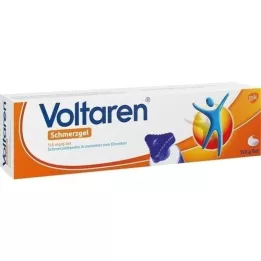

VOLTAREN Pain gel M. Blue Comfort Trehl., 150 g
VOLTAREN Schmerzgel m.blauem Komfort-Drehverschl.
$14.76 $25.99






